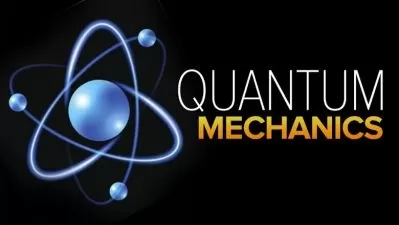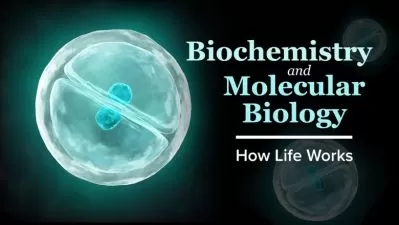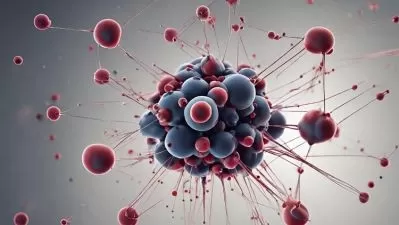Understanding the Misconceptions of Science
Don Lincoln
12:18:08
Description
Evolution. Relativity. The Big Bang. These and other scientific ideas have come to define our understanding of the modern world and how it works. But here's a secret: What you learned about them in school isn't necessarily the whole truth.
Science is, undeniably, a truly incredible field of human endeavor. In the last five centuries alone, we've been able to make startling advancements in human progress thanks to discoveries like electricity and magnetism, the germ theory of diseases, and the inner workings of atomic particles.
But for all its importance to our everyday lives, most of us who aren't scientists don't think too deeply about science. We settle for what we were taught in high school—and for the most part, that education was sound. Still, compromises had to be made, leaving most of us with conceptions of science that weren't wrong, but also were just a piece of a larger, much more complex story. Misconceptions are even taught in fairly advanced science classes—and are still believed by people with quite respectable scientific educations.
Consider these commonly held scientific beliefs:
- Planetary orbits are fixed ellipses.
- We only use 10 percent of our brains.
- Nothing travels faster than light.
- A thrown object's trajectory is a parabola.
They seem correct on the face of it, but they're all misconceptions that aren't entirely accurate. There's much more to the story than you think. And Professor Don Lincoln, a Senior Scientist at the Fermi National Accelerator Laboratory, has crafted a magnificent 24-lecture course devoted to busting myths, clearing up confusion, and giving you scientific epiphanies that could change how you think about your everyday world. In Understanding the Misconceptions of Science, you'll explore shocking truths about some of science's most well-known—and often controversial—concepts, including the physics of flight, black holes, quantum mechanics, and even the possibility of extraterrestrial life. Ultimately, Professor Lincoln's research-backed lectures offer newer, better, and more correct ways to understand what you were once taught.
Explore Misconceptions in Biology, Chemistry, and Beyond
“Science,” Professor Lincoln says, “is built on facts, sure. But it's also a methodology for determining and accepting—or rejecting—those facts. And inherent in science is a perpetual level of uncertainty and ignorance. Science has to be prepared to change and grow.”
This ever-evolving nature of scientific knowledge and understanding is at the heart of Understanding the Misconceptions of Science. Professor Lincoln has structured this course as a broad survey that assumes little prior knowledge of the fields being covered, which includes chemistry, physics, biology, quantum mechanics, astronomy, mathematics, and more.
Almost every lecture is devoted to a single major scientific concept or discovery that is often misunderstood or over-simplified. At the start of the lecture, Professor Lincoln highlights how that particular misconception is commonly taught to students. Then, he takes you on a deep dive into how the science really works, and how recent discoveries and advances have reframed—and in some instances, shattered—commonly held ideas.
The result is a course that not only opens your eyes to just how large and mind-bending science is, but that can also spark a curiosity to investigate further.
Discover a Host of Scientific Epiphanies
What makes Understanding the Misconceptions of Science such an entertaining and engaging learning experience are the “aha!” moments packed into every lecture. Delivered with insight, clarity, and a dash of humor, these and other of Professor Lincoln's scientific epiphanies will have you rethinking what you know—or thought you knew—about the world of science.
- A (Less Than) Ideal Gas Law. The ideal gas law describes the relationship between pressure, volume, temperature, and the number of moles of molecules for an ideal gas. There's just one problem: gases aren't ideal. That's where the helpful—and slightly more complex—van der Waals equation comes in.
- Portrait of an Electron. We tend to think of electrons in an atom orbiting the nucleus like planets around a star. The scientific reality, however, is that electrons are simultaneously everywhere the laws of quantum mechanics allow. The truth is that most matter is just empty space, and what you're made of aren't simple spheres—but force fields.
- Think outside the Punnett Square. Most human characteristics aren't governed by a single gene. Take eye color, for example. As it happens, there are two important genes dealing with eye color, along with 10 other genes that play a minor role. Plus, the idea that dominant traits will be the most common (and recessive traits the rarest) is wrong.
- Less Bomb, More Balloon. During the Big Bang, all the energy and matter of the universe wasn't just sitting somewhere in space and then blew up. Rather, because matter and energy and space and time are interlinked, there was a tiny volume that wasn't a singularity that expanded into our visible universe more like an expanding balloon.
- Use Your (Whole) Brain. No, we don't use just 10 percent of our brain, and a big reason is evolution. The brain uses about 20 percent of the energy consumed by metabolism, in spite of being only about 2 percent of the body's mass. If 90 percent of the brain were not used, there would be a huge evolutionary pressure to reduce the size of brains and skulls.
- Floating or Falling in Space. While you may see video clips of astronauts in the International Space Station doing flips and all sorts of things, the truth is that they're not floating in zero gravity. The correct word we should be using to describe the state in which these astronauts are working and playing in is, rather, “free fall,” and the difference is more significant than you may think.
Along the way, you'll develop a sharper understanding of some of the most fundamental concepts, equations, theories, and issues in contemporary science, including:
- Faraday cages, metal shapes that help protect what's inside from electrical charges and which are used to understand what happens when lightning strikes a car;
- The Bernoulli equation, developed to better understand the laws of motion of fluids and also used (incorrectly) to explain how planes fly;
- The twin paradox, the most famous paradox in special relativity that bundles together a pair of twins to study space travel, time dilation, aging, and movement;
- Carbon-14 dating, a scientific method for piecing together how long ago something happened that's actually a more complex process than it might seem; and
- The Drake equation, which can provide an estimate of the number of civilizations in our galaxy that we could detect—but which also neglects important parameters.
Gain an Awareness for the Immensity of Science
As with many of our other science courses, Understanding the Misconceptions of Science takes a welcoming, introductory approach to topics and issues that might seem intimidating to the average non-scientist.
Professor Lincoln goes to great lengths to make his expertise accessible to everyone willing to open their mind to the possibility that what they think they know about science isn't the whole truth. To that end, he's crafted these lectures to include helpful graphics, animations, images, equations, and scientific terms that help you make better sense of what's being discussed.
But what will keep you engaged, above all, is the energy and excitement of Professor Lincoln's lectures. He's an expert public speaker, dedicated to scientific outreach and education—efforts which have earned him the 2017 Andrew Gemant Award from the American Institute of Physics.
Understanding the Misconceptions of Science is about awareness and respect for what an immense undertaking scientific inquiry and experimentation is. “The real message here is just how little we know,” he says. “Science popularizations are entirely misleading on where we are in this effort. This isn't to minimize our accomplishments. We've come a long way. But we have even further to go.”
Regardless of where you are in your own scientific adventures, this course will empower you with not just good science—but better science.
More details
User Reviews
Rating
Don Lincoln
Instructor's CoursesDon Lincoln is a Senior Scientist at Fermi National Accelerator Laboratory (Fermilab). He is also a Guest Professor of High Energy Physics at the University of Notre Dame. He received his Ph.D. in Experimental Particle Physics from Rice University.
Dr. Lincoln’s research has been divided between Fermilab’s Tevatron Collider, until its close in 2011, and the CERN Large Hadron Collider, located outside Geneva, Switzerland. The author of more than 1,000 scientific publications, his most noteworthy accomplishments include serving on the teams that discovered the top quark in 1995 and confirmed the Higgs boson in 2012. He is a fellow of the American Physical Society and the American Association for the Advancement of Science.
His writing at a popular level includes many articles as well as four books: Understanding the Universe, The Quantum Frontier, The Large Hadron Collider, and Alien Universe. His enthusiasm for science education earned him the 2013 Outreach Prize from the High Energy Physics Division of the European Physical Society.
Dr. Lincoln has given hundreds of lectures on four continents to a broad range of audiences. He is a blogger for the website of the PBS television series NOVA, and he also writes a weekly column for the online periodical Fermilab Today.

The Great Courses
View courses The Great Courses- language english
- Training sessions 24
- duration 12:18:08
- English subtitles has
- Release Date 2023/06/07








![Robert Kirshner - Cosmic Questions VHS2 guide [course 145] L8 OOP](https://traininghub.ir/image/course_pic/15904-x225.webp)







